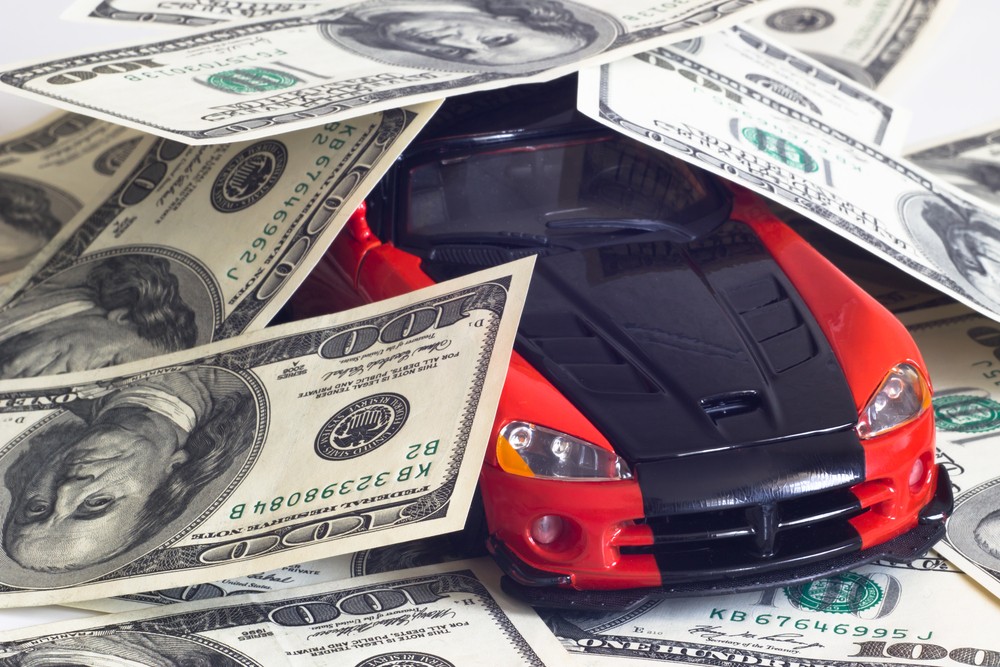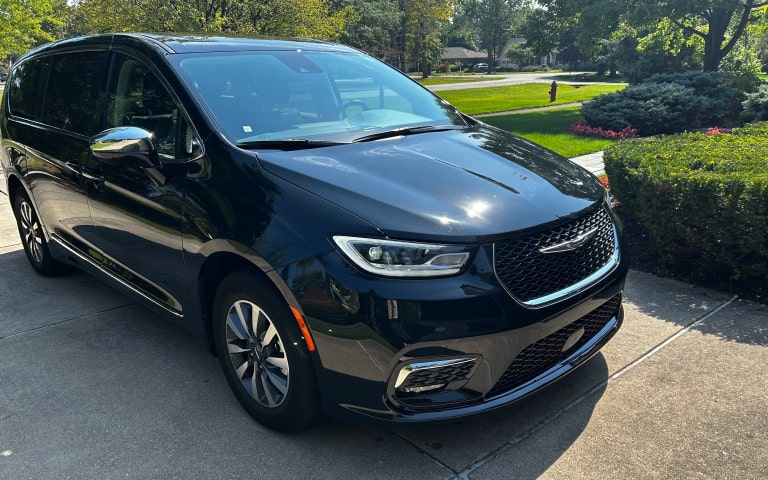The automotive industry is a complex ecosystem. It’s influenced by a myriad of factors, from technological advancements to economic policies, including the impact of tariffs on cars.
Tariffs have a profound impact on this industry. It especially impacts the prices of used cars, which are important for both car dealership owners and buyers. Tariffs, essentially taxes on imported goods, can increase the cost of vehicles and parts. This, in turn, can lead to a rise in used car prices. It’s a ripple effect that touches every corner of the automotive marketplace.
For dealership owners, understanding the impact of tariffs is crucial. It helps them navigate the challenges and adapt their business strategies accordingly.
For consumers, this knowledge can guide their decisions when selling or buying used cars. It empowers them to get the best value for their money.
In this article, we look at how tariffs affect used cars. We will discuss what this means for dealerships and what options consumers have.We’ll also discuss how technology can offer innovative solutions to these challenges.
Understanding Tariffs and Their Role in the Automotive Industry
Tariffs serve as taxes levied on imports and exports. Their primary aim is to protect domestic industries by making foreign goods more expensive.
In the automotive industry, tariffs can target entire vehicles or specific parts. Consequently, the cost of production and final retail prices can rise, affecting the entire supply chain.
The role of tariffs extends beyond mere price adjustments. They influence several facets of the automotive sector, including consumer behavior and dealership operations. Understanding these impacts is essential for both business owners and consumers.
Here are key roles of tariffs in the automotive industry:
- Pricing: Tariffs can inflate the cost of imported vehicles and parts, affecting overall car pricing.
- Market Stability: Trade wars and tariffs introduce uncertainties, destabilizing markets and influencing demand.
- Supply Chain Disruptions: Increased costs can strain supply chains, affecting inventory levels at dealerships.
Despite their protective intent, tariffs can lead to unintended consequences. Understanding these nuances allows stakeholders to navigate this complex landscape more effectively. Understanding tariffs empowers businesses and consumers to make informed choices in a fluctuating market. This knowledge is crucial for strategic planning and maintaining competitive edges in the automotive industry.
Recent Tariffs and Their Direct Impact on Used Car Prices
Recent tariffs in the automotive industry have dramatically reshaped the market landscape. Imposed on imported cars and auto parts, these tariffs have caused significant price hikes.
Dealers now face higher costs for vehicles and components, which directly affects used car prices. The increased expenses trickle down, as dealerships pass costs to consumers.
This escalation in used car prices has led to an affordability challenge for buyers. As new car prices rise due to tariffs, demand for used cars grows, pushing prices even higher.
The supply chain has also felt the tariff pinch. Delays and increased costs in importing parts disrupt inventory, limiting options for used car buyers. This scarcity drives prices up further.
With consumer demand shifting towards budget-friendly options, the market for used cars becomes more competitive. Sellers experience better returns, but buyers struggle with inflated costs.
Dealerships need to strategize effectively to balance these financial burdens while maintaining customer satisfaction. By understanding the nuances of these tariff impacts, dealers can better prepare to adapt to these economic changes. This knowledge empowers them to implement pricing strategies that attract buyers even in a volatile market environment.
The Ripple Effect: How Tariffs Influence Dealership Operations and Consumer Choices
Tariffs have created a ripple effect that reshapes dealership operations. Initially, dealerships face higher costs due to increased car part expenses, which impact their inventory management strategies. This economic pressure forces dealerships to reevaluate sourcing and stock levels, often leading to narrower selections for consumers.
As prices rise, consumer preferences shift. Buyers become more budget-conscious and tend to gravitate towards more economical choices. This change requires dealerships to adjust their offerings and potentially focus more on affordable and fuel-efficient models. However, these adjustments come with challenges, including the need to maintain profitability despite decreased margins.
Dealerships must also rethink their marketing strategies in response to these shifts. The emphasis often pivots to highlighting cost-effectiveness and long-term value. Communicating these benefits transparently can enhance consumer trust, encouraging purchases even in a tariff-affected environment.
Meanwhile, consumers are becoming increasingly savvy. They leverage digital platforms to compare prices and options extensively. This behavior intensifies competition among dealerships, making customer service and personalized experiences more crucial than ever. Dealerships able to adapt operational practices and embrace these changes can not only survive but potentially thrive, enhancing their reputation and market share despite the tariff-induced challenges.
Navigating the Challenges: Strategies for Dealerships to Mitigate Tariff Impacts
Dealerships face formidable challenges due to tariffs on used cars. To counteract these economic pressures, strategic adjustments are crucial. Implementing creative approaches can help businesses stay competitive and satisfy customer expectations.
A key strategy involves optimizing inventory management. Dealerships should focus on building diverse stock, especially models that rely less on imported parts. This approach minimizes vulnerability to price hikes from tariffs, offering consumers more stable pricing options.
Next, adopting flexible pricing strategies can help maintain market appeal. Dynamic pricing models, powered by data analytics, allow for real-time adjustments based on market fluctuations. This ensures pricing remains competitive while still maintaining adequate profit margins.
Additionally, enhancing customer engagement through informative communication builds consumer confidence. Keeping buyers informed about why prices change and how it affects them can improve transparency. This builds trust, which is invaluable in uncertain times.
Here are practical ways dealerships can mitigate tariff impacts:
- Foster relationships with local suppliers to reduce dependency on imported parts.
- Invest in technology to streamline operations and improve customer interactions.
- Offer varied financing options to cater to different consumer needs.
- Train staff to handle customer inquiries regarding tariff-related price changes.
- Leverage digital marketing to broaden reach and highlight competitive advantages.
By adopting these strategies, dealerships can better navigate the turbulence tariffs create, ensuring sustainability and customer loyalty amidst market changes.
The Consumer Perspective: Selling and Buying Used Cars in a Tariff-Impacted Market
For consumers, tariffs on used cars present a unique set of challenges and opportunities. As car prices shift, buyers and sellers must adapt quickly to new market conditions.
Used car prices often rise when tariffs increase costs on new vehicles and parts. This can make used cars more attractive to price-conscious buyers. However, it also means sellers can potentially command higher prices for their vehicles.
Buyers should stay informed about market trends. Researching price changes and understanding why they occur can empower consumers to make smarter purchasing decisions. Knowledge is power, and being well-informed helps in securing better deals.
For sellers, timing is crucial. With prices in flux due to tariffs, knowing when to sell can maximize returns. Monitoring market dynamics and leveraging online car valuation tools can provide valuable insights. This can optimize the selling process and ensure you get top dollar. As tariffs continue to impact pricing, staying adaptable and informed is essential for both buyers and sellers in the used car market.
Leveraging Technology for Real-Time Pricing Strategies and Transparency
Technology offers powerful tools to navigate the complexities of tariffs on used cars. Real-time pricing strategies can greatly benefit both dealerships and consumers. With advanced data analytics, dealerships can adjust prices in response to market changes instantly.
Digital platforms enable transparency in transactions. By utilizing online marketplaces, buyers and sellers have access to a wealth of information. This transparency fosters trust and confidence, crucial elements in any successful transaction.
For dealerships, implementing AI-driven systems can forecast price trends and buyer behavior. This forward-thinking approach allows businesses to remain competitive and meet consumer expectations. Embracing technology is not just an option; it’s a necessity in a tariff-impacted market.
Case Studies: Success Stories in the Face of Tariffs
Several dealerships have successfully navigated the challenges posed by tariffs. One such example is a mid-sized dealership in Texas. By embracing technology and focusing on consumer education, they improved their customer satisfaction and sales.
Another success story comes from a dealership network in California. They implemented flexible financing options and expanded their online presence. This strategy not only preserved their market share but also increased their consumer base. Their proactive approach serves as a valuable blueprint for others facing similar challenges.
The Long-Term View: Tariffs and the Future of the Automotive Industry
In the long run, tariffs could reshape the automotive industry significantly. Tariffs may lead to shifts in car manufacturing locations. Businesses might seek out regions with fewer trade restrictions, impacting global supply chains.
Moreover, tariffs could influence the type of cars produced. With costlier imports, the focus might shift towards local production and innovation. This could accelerate the development of electric and autonomous vehicles.
The impact on employment within the automotive sector also can’t be ignored. If manufacturing shifts elsewhere, job landscapes will change, necessitating workforce adaptations. Companies might need to invest in retraining programs to keep pace with the evolving industry.
Consumer behavior could alter as a direct consequence. Rising costs might push consumers towards maintaining older vehicles longer. Alternatively, it might increase the appeal of certified pre-owned cars. Regardless, the industry must brace for these potential shifts, ensuring agility and resilience in planning for the future.
Conclusion: Adapting to Change and Preparing for the Road Ahead
Tariffs have undeniably transformed the automotive landscape. Yet, they also present opportunities for growth and adaptation. Dealers and consumers alike must stay informed about ongoing policy changes.
By embracing innovation and technology, dealerships can navigate these complexities effectively. Transparency, dynamic pricing, and customer communication are key. For consumers, exploring alternative transportation options and staying updated on market trends will be vital.
The future holds challenges and possibilities. It demands a proactive and informed approach, ensuring both dealerships and consumers thrive amid shifting economic dynamics. With the right strategies, everyone can successfully ride these waves of change.


















